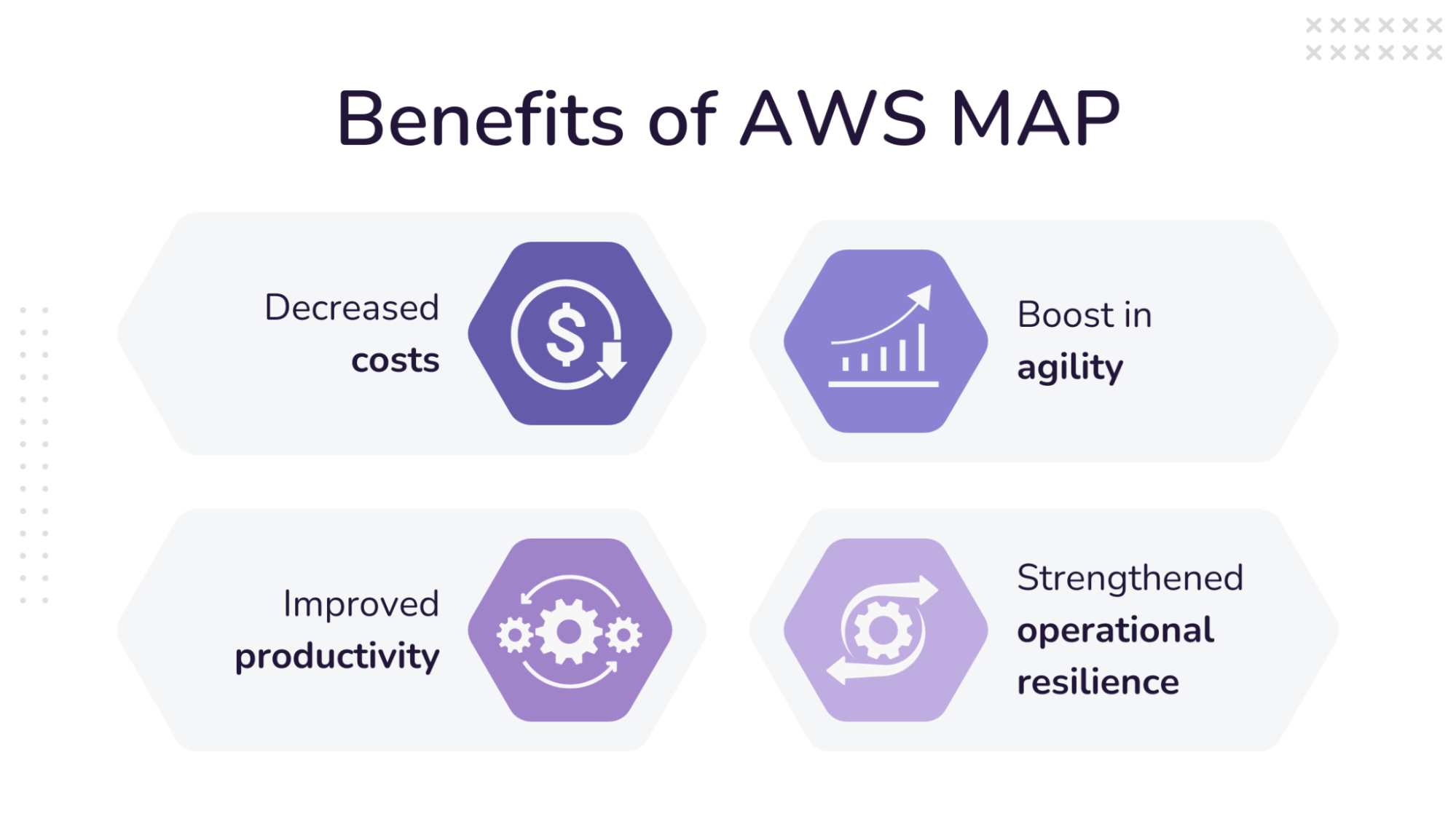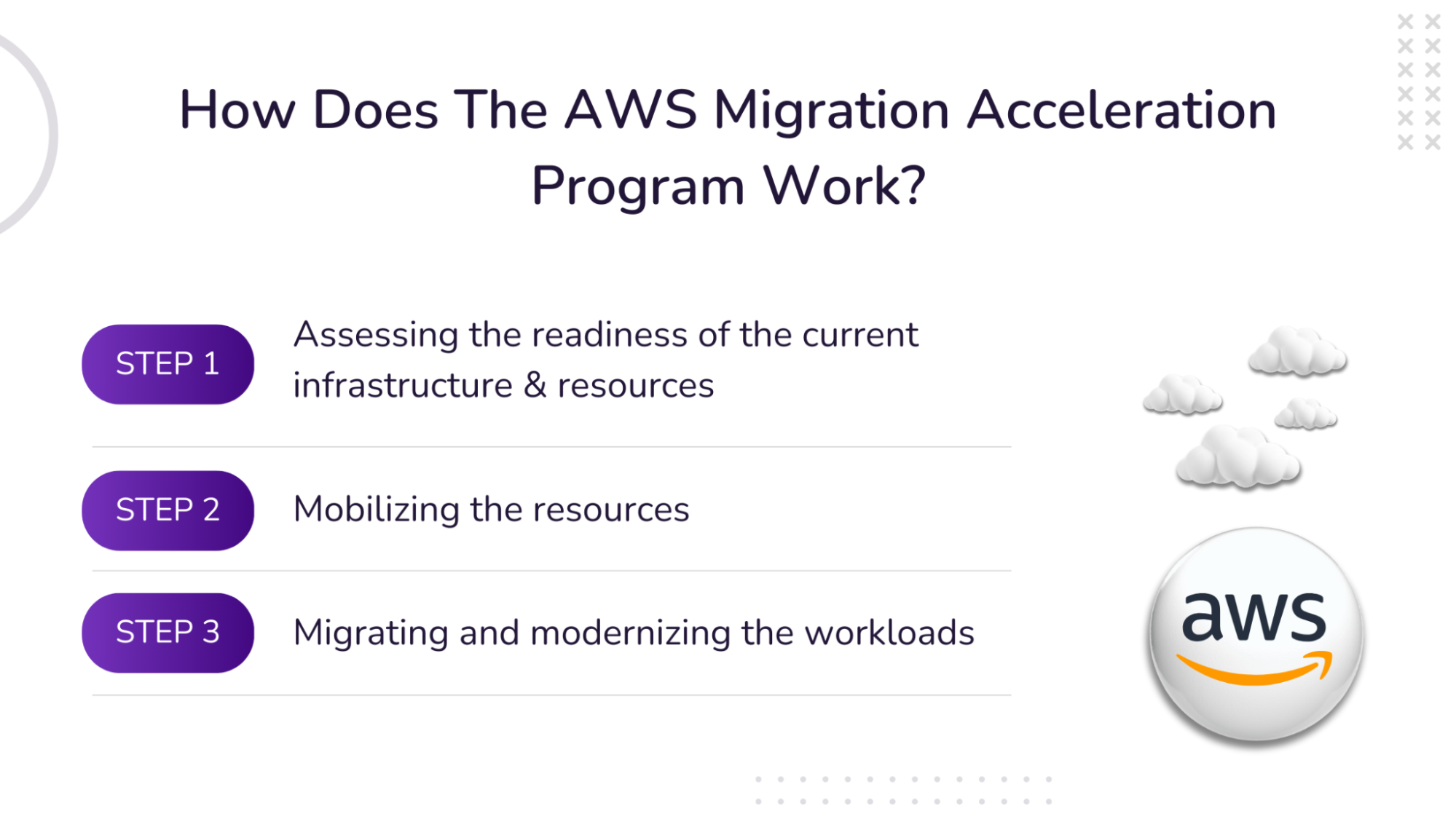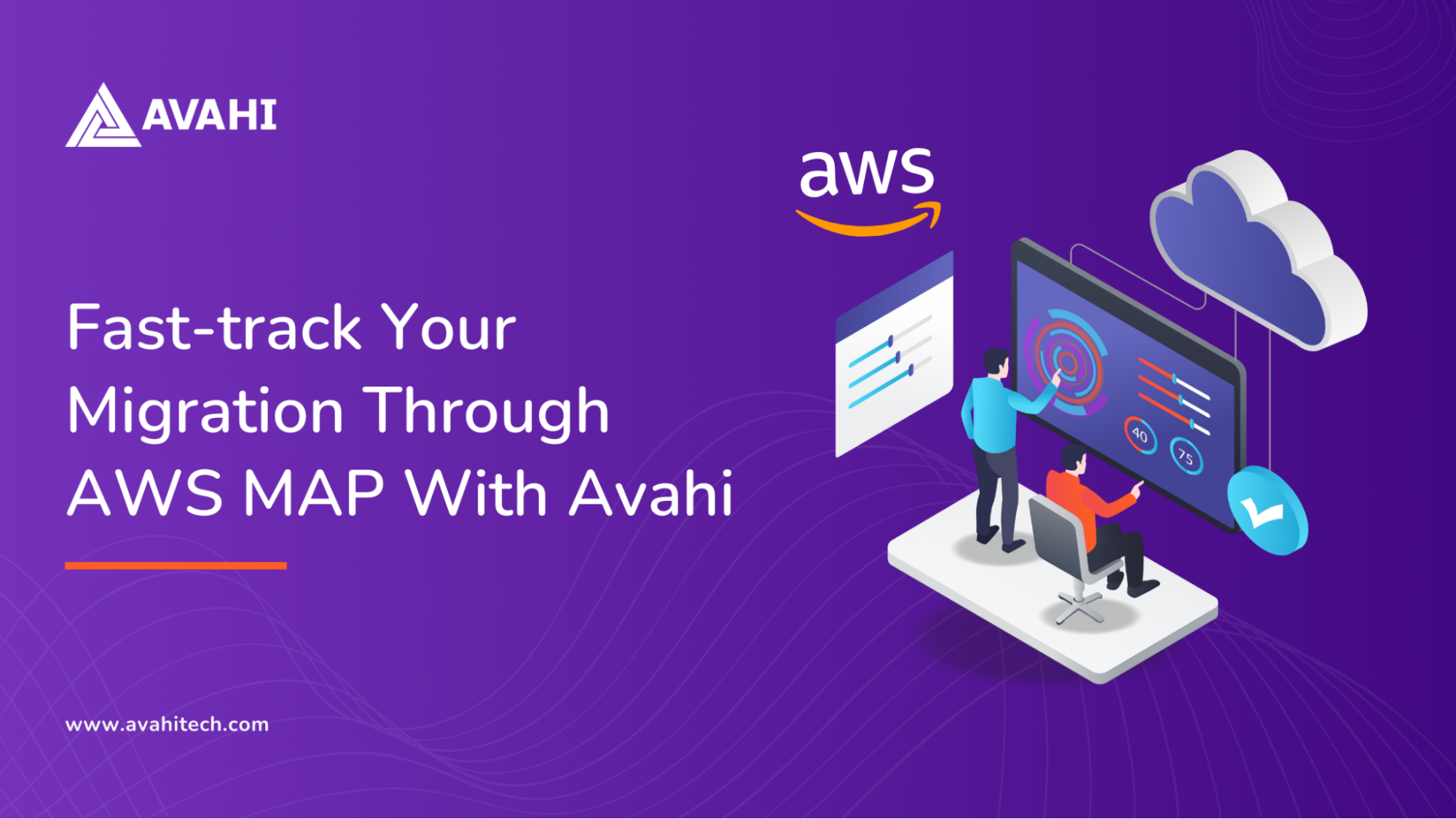With a 32 percent market share, AWS maintains the lead in the cloud market. As one of the most popular vendors in the cloud infrastructure services market, AWS delivers a broad set of cloud storage services to enterprises across different industries.
Amazon has introduced the AWS Migration Acceleration Program (AWS MAP) to make it easier for businesses to migrate to AWS.
Let’s examine what AWS MAP is and how it can fast-track your migration process.
What is AWS MAP?
The AWS Migration Acceleration Program or MAP is designed to help businesses migrate their existing data, workloads, and applications to Amazon Web Services (AWS). It aims to help businesses achieve accelerated and successful migration while maximizing AWS benefits and minimizing risks.
MAP provides the tools to automate and accelerate the migration process for businesses wanting to move to the cloud while reducing costs. It uses the three-phased migration framework of mobilizing, migrating, and modernizing infrastructure to help businesses achieve their migration goals effectively. Through MAP, businesses can build a strong cloud foundation as they move to AWS. Reducing migration risks and offsetting the total cost of migration also becomes possible.
However, it’s important to note that AWS MAP is a unique program that is currently only offered by selective leading AWS partners with the proven experience and capabilities to handle successful migration and modernization on AWS.

Here are some of the many benefits of using AWS MAP for your migration process:
-
Decreased costs
AWS MAP provides you with all the tools and migration best practices needed to reduce the overall costs associated with migration. It aims to reduce costs at every stage of the migration process to ensure you can seamlessly move your applications and infrastructure to the cloud without worrying about the total cloud spend.
Once businesses move to AWS, they also achieve significant cost savings as they move their infrastructure to the cloud. According to a report by IDC, AWS users have 51 percent lesser operation costs than businesses running their infrastructure on-premises. After deploying AWS, businesses’ total infrastructure spending decreased by 19 percent.
-
Improved productivity
By automating and managing administrative migration tasks, AWS MAP allows your internal team to shift their focus to more strategic and tactical tasks, increasing productivity and efficiency.
Teams no longer have to worry about the nitty-gritty of migration. Instead, they can keep their focus on the big picture.
According to IDC’s report, businesses can improve overall staff efficiency by 62 percent by adopting AWS.
-
Boost in agility
As migration accelerates at scale, technical debt gets significantly reduced, and projects get completed faster. Businesses can deploy new features and applications faster while reducing errors.
AWS MAP accelerates innovation on a large scale, allowing businesses to become more agile and successfully meet the market’s constantly changing demands.
-
Strengthened operational resilience
AWS inherently offers a highly resilient infrastructure, protecting businesses against cybersecurity attacks, power outages, natural disasters, and hardware failures. This protection is extended to AWS users even during the migration process when they leverage AWS MAP to migrate their infrastructure and workloads to the cloud.
You get an increased migration speed and benefit from the improved AWS SLAs, leading to reduced unplanned outages and improved operational resilience.
According to the IDC report, AWS users experience a 94 percent reduction in unplanned downtime and outages compared to previous on-premise infrastructure.

Here are the steps for implementing AWS MAP:
Step 1: Assessing the readiness of the current infrastructure and resources
The first step of migration involves a complete readiness assessment of your current infrastructure to identify capability gaps and find the best migration strategy that aligns with your business goals. Based on the assessment, you also must build the Total Cost of Ownership (TCO) for the entire migration project.
The readiness assessment should also take into consideration the six main dimensions of the AWS Cloud Adoption Framework, which include business, people, governance, platform, security, and operations.
Step 2: Mobilizing the resources
In the next step, the focus is on mobilizing the resources by fixing the capability gaps identified in the first step. This phase helps you build a strong operational foundation for your migration strategy, improving the success of the migration process.
Step 3: Migrating and modernizing the workloads
This is the migration stage where your MAP partners help execute the large-scale migration of your infrastructure by seamlessly moving your data, workloads, and applications to the cloud. MAP Partners are selective AWS partners with immense experience in successfully handling large-scale migrations to AWS with little to no downtime.
Best Practices to Save Costs With AWS MAP
Identify which workloads are eligible for credits
The biggest challenge with AWS MAP is analyzing the total costs associated with migrating and running the resources on AWS. You also need to analyze your existing resources and workloads to identify which ones are eligible for credits and which ones aren’t.
Whether your workloads are eligible for credit or not will majorly depend on the type of workload you are migrating. MAP has a specialized scaling mechanism that accelerates migration and modernization of different types of on-premise workloads, including Windows, Mainframe, SAP, and VMware.
Look out for untagged resources
It is just as important to look for untagged resources and tag them appropriately as you move forward with the migration processes. When resources are left untagged, they don’t get identified as the map migrated resources, making it difficult for you to get credits for them.
Analyze how many credits you can receive in a quarter
AWS MAP offers credits every quarter. These service credits are calculated according to a user’s total monthly uptime percentage in a particular AWS region.
If all the resources are tagged correctly, you can expect service credits according to the following table:

Source: AWS
You can also review the number of credits you have received in the past as part of the AWS MAP program to ensure you are able to meet the financial expectations for every quarter.
Avahi is an official AWS Cloud Consulting Partner that can help your business with seamless cloud adoption and migration to AWS. As one of the few AWS MAP partners, Avahi helps enterprises simplify the numerous migration complexities and align their internal teams for a successful migration. Avahi’s team of experts can create a custom migration plan based on your unique business challenges and the best practices they have developed after years of experience.
Reach out to us to create a custom AWS migration plan powered by an AWS MAP partner.




